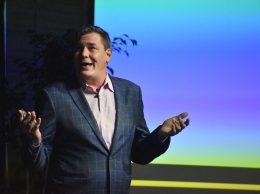California lifts stay-home orders as ICU capacity grows; COVID remains “widespread” in region
IN THIS ARTICLE
- Central Coast Topic
- Tony Biasotti Author
By Tony Biasotti Monday, January 25th, 2021
California Gov. Gavin Newsom lifted the state’s regional stay-home orders Monday morning, paving the way for the return of outdoor restaurants service and a few other business activities.
Ventura, Santa Barbara and San Luis Obispo counties are now back in the “purple” or “widespread” tier of the state’s color-coded pandemic regulations—the most restrictive level, but less restrictive than the stay-home orders that had been in place since early December.
While the stay-home orders were regional in scope, the color system treats each county separately. Only four of California’s 58 counties are out of the purple tier, all of them sparsely populated counties in the state’s far north or Sierra mountain regions.
In the purple tier, restaurants, gyms and places of worship can operate outdoors. Hair salons, barbershops and other personal care services can open indoors.
The near-ban on private gatherings in the stay-home order is also gone, replaced by a requirement that gatherings take place only outdoors and among people from no more than three separate households.
Offices remain closed to in-person work, except for essential workers who cannot work from home.
The now-defunct stay-home orders divided the state into five large regions, with the Tri-Counties grouped with the rest of Southern California. Stay-home orders went into effect in each region when the state’s projections for the availability of intensive care beds went below 15%.
In lifting the orders on Jan. 25, the California Department of Public Health said the four-week projections for ICU capacity had climbed above 15% for every region in the state, as the post-holiday surge in COVID-19 cases began to subside.
“Californians heard the urgent message to stay home as much as possible and accepted that challenge to slow the surge and save lives,” said Dr. Tomás Aragón, CDPH director and state public health officer, said in a statement. “Together, we changed our activities knowing our short-term sacrifices would lead to longer-term gains. COVID-19 is still here and still deadly, so our work is not over, but it’s important to recognize our collective actions saved lives and we are turning a critical corner.”











